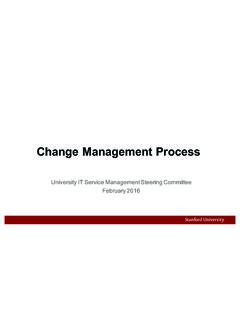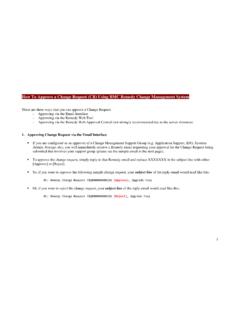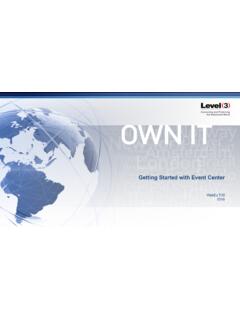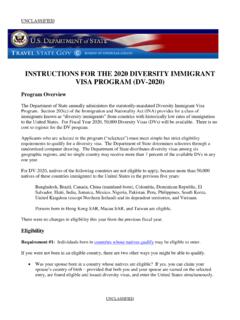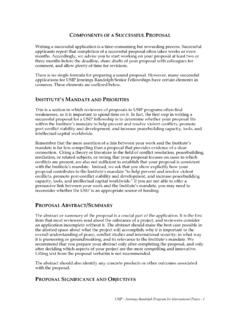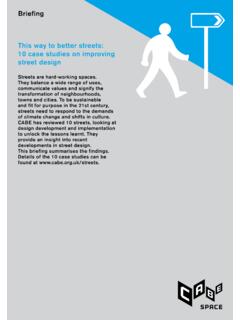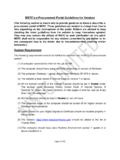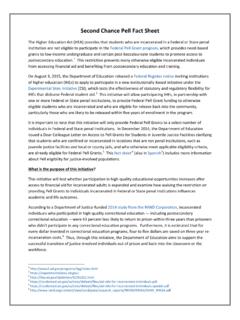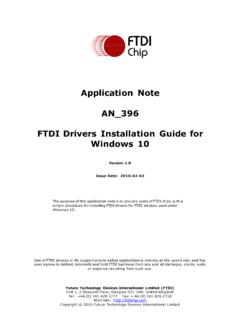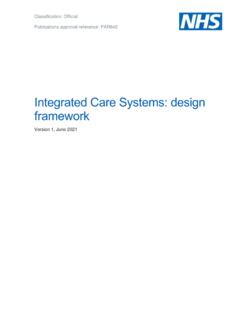Transcription of ServiceNow Change Management Guide - Stanford University
1 Stanford University November 22, 2017 ServiceNow Change Management Guide Page 2 of 44 Table of Contents 1. Change Management Overview .. 4 Introduction to Change Management .. 4 Goals of Change Management .. 4 Objectives of Change Management .. 4 Key Policies .. 5 2. Stanford Change Management Process .. 5 Overview .. 5 Roles and Responsibilities .. 5 Types of 8 Lead Times for Normal/Expedited Change Requests .. 9 High Level Process Overview .. 10 Normal/Expedited Change .. 10 Emergency .. 10 Standard (pre-authorized) .. 11 Process Steps and Activities .. 12 Raise and Record .. 12 Assess and Evaluate.
2 12 Authorize and Schedule .. 13 Approval Workflow .. 13 Implement .. 14 Review and Close .. 14 3. Stanford ServiceNow Environment .. 15 Creating a New Change Request .. 15 Normal and Expedited Change Form .. 16 Normal and Expedited Change form fields .. 17 Change form tabs .. 18 Notes tab .. 18 Planning tab .. 18 Schedule tab .. 19 Risk Assessment tab .. 20 Conflicts tab .. 20 Closure Information tab .. 21 Change Tasks .. 22 Adding/modifying Change Tasks .. 23 Normal and Expedited Change Workflow .. 24 Approving a Change .. 26 Within 26 Via Email .. 27 Delegating Authority .. 27 Emergency Changes .. 29 Emergency Change form .. 30 4. Standard Changes.
3 32 Requesting A New Standard Change Template .. 32 Review and Approvals for New Standard Change Proposals .. 36 Creating a new Standard Change (from the approved template) .. 36 5. Informational Changes .. 38 Page 3 of 44 6. Change Notifications .. 40 7. Reports and Status Pages .. 41 CAB 41 8. Additional Information .. 44 Page 4 of 44 1. Change Management Overview Introduction to Change Management Change Management is the process responsible for managing all Changes to the production operations environment from inception to completion . To be successful in managing Change , the Change Management process must ensure that all changes are recorded and authorized at the appropriate level.
4 Change Management helps organizations understand and work to minimize risks of changes to the IT environment. Goals of Change Management Improve the quality of changes and reduce the potential for Change induced incidents by ensuring that a standard methodology is used to handle all changes and control the impact upon the day-to-day operations of the organization. Manage the business risks at a high level ( , taking acceptable risks but evaluating and prioritizing based upon what is acceptable). Deliver successful changes at the first attempt. Objectives of Change Management Minimize the risk and severity of any disruption Ensure that all changes are logged (or captured) in a centralized repository where the information can be shared by other processes.
5 Assess all changes based on their impact, benefit and risk to the business, and to approve or reject the request for Change accordingly. Schedule all changes based on the requirements of the business, the availability of appropriate resources and in consideration of other changes being deployed. Ensure that all changes are appropriately tested and certified and that the appropriate implementation and remediation plans are available. Provide timely communication of Change plans and schedules as well as the status of all changes to appropriate stakeholders and affected users. Provide general reporting capabilities against the repository of changes, including trending information and specific metrics relevant to the process.
6 Page 5 of 44 Key Policies Each proposed Change requires a Change record and associated task(s) be entered into the Service Now enterprise-wide Change Management tool. Every emergency, unsuccessful and successful selected random Change will be reviewed and any identified post-implementation actions will be documented. All normal and expedited changes will be assessed for risk and appropriate actions established to mitigate potential incidents. Maintain Change windows and enforce scheduling of changes along with authorization for exceptions. The Change Owner (Assigned to) individual will be deemed the owner of the Change request from creation to closure.
7 All Change Requests must have the Change Owner (Assigned To) or their informed designated representative in attendance to have the Change Request considered for authorization. Core CAB members are required to attend or have their designee attend the regular CAB meetings. Stanford Change Management Process Overview A Change Request is required when there is an addition, modification, or removal of any IT Service, system or component(s) that are part of a Production environment as well as all services with agreements that specifically state service levels and environment up-time, are subject to the Change Management process and policies. Note: See Appendix for "Out-of-Scope" list.
8 (Note: as of July 15, 2016, there are no out-of-scope changes asked for or authorized. As a result, all changes require a Change Request.) Roles and Responsibilities Each role is assigned to perform specific tasks within the process. The responsibilities of a role are confined to the specific process. They do not imply any functional standing within the hierarchy of an organization. For example, the process manager role does not imply the role is associated with or fulfilled by someone with functional Management responsibilities within the organization. Within a specific process, there can be more than one individual associated with a specific role. Additionally, a single individual can assume more than one role within the process although typically not at the same time.
9 Page 6 of 44 Roles Description Change Requestor (Requested By) The person filling out the Change and submitting (creating) it via the Service Now support tool. Unless the Change Requester assigns the Change Request to a different Assigned To individual, this role provides all the details regarding the Change , including the business justification, implementation plan, CI details, remediation plan, etc. that are to be included in the request. RESPONSIBILITIES: - Unless the Change Request is assigned to another Assigned to individual, this role is deemed the Owner of the Change Request from creation to closure - Generates and submits the Change to start the process.
10 - Enters the business needs, goals and objectives of the Change and ensures they are accurate. - Ensures the risk factors have been assessed and verifies the validity of the initial priority setting. - Provides all necessary supporting documentation for the Change ( install, test, and remediation plans). - Provides CAB representation when necessary. CHARACTERISTICS: - General business understanding and perspective. - A good understanding of overall production environment. - Knowledge of the organizational structure and the business-to-customer relationships. - Affinity with the technical environment to allow for description of infrastructure and operational impacts to the Change .
